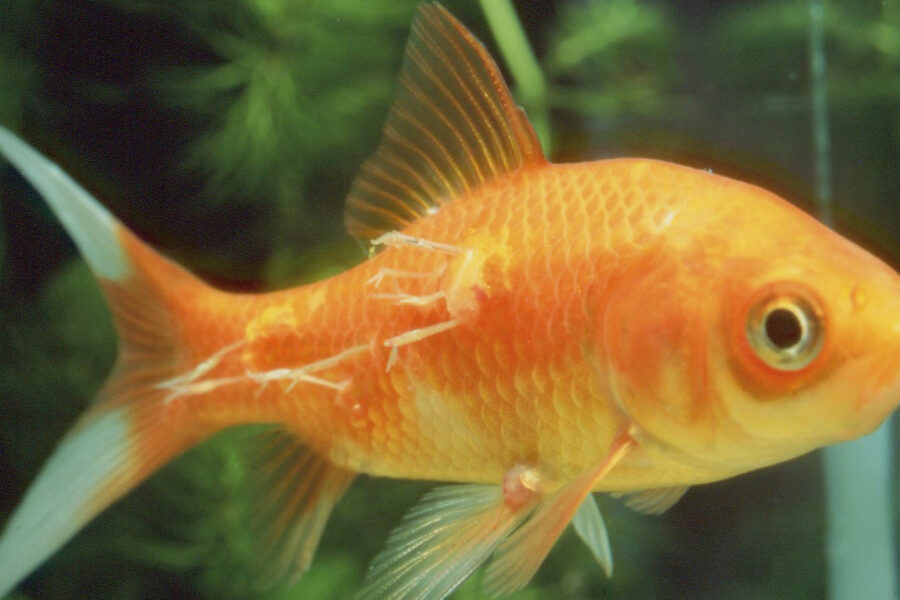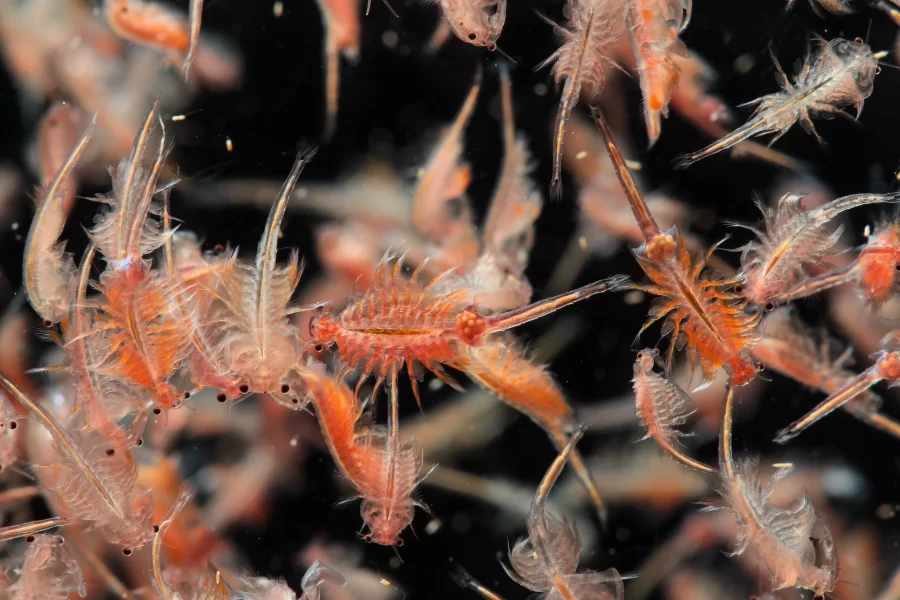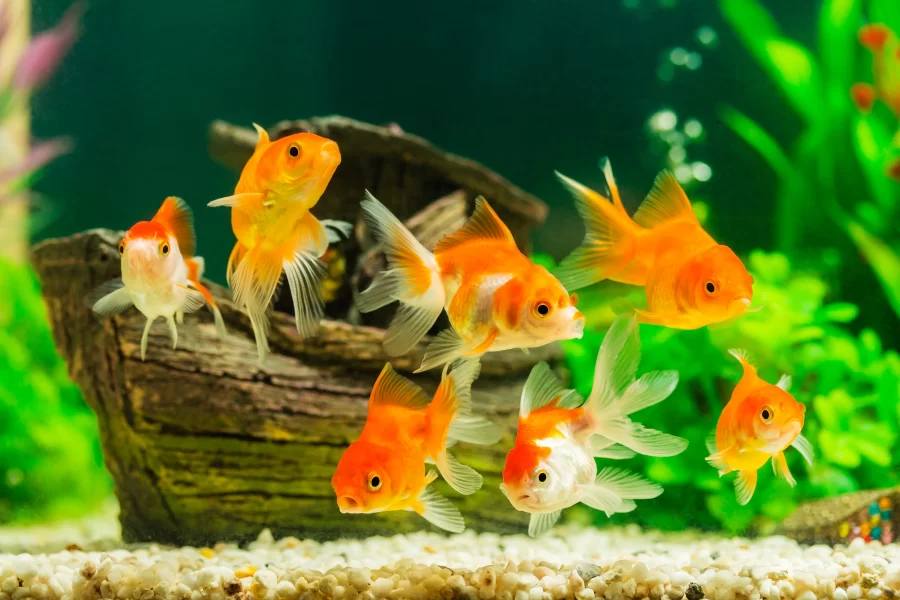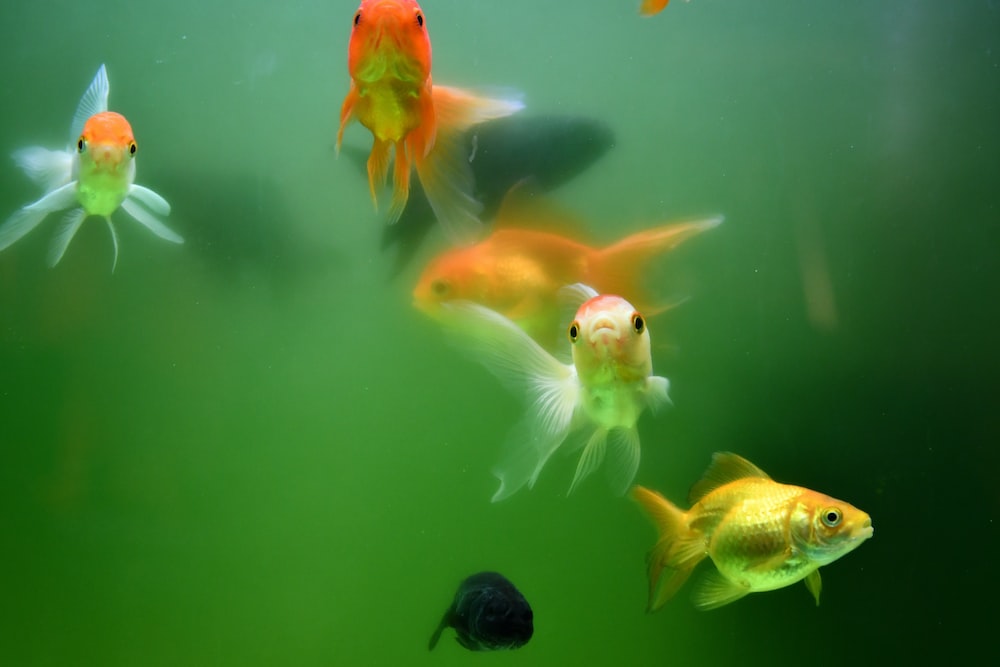
Algae Bloom in Goldfish Tanks – sounds a bit like a psychedelic band from the ’60s, doesn’t it? But trust us, it’s a lot less fun and far more frustrating. As goldfish guardians, we know that these green invaders can turn your tank from glam to gloom.
But don’t despair! This guide will arm you with everything you need to combat these pesky plant-like pests. We’ll swim through the causes, prevention techniques, and treatments, all in an easy-to-read, light-hearted style. So buckle up, aquarists, it’s time to show that algae who’s boss!
Understanding Algae Bloom
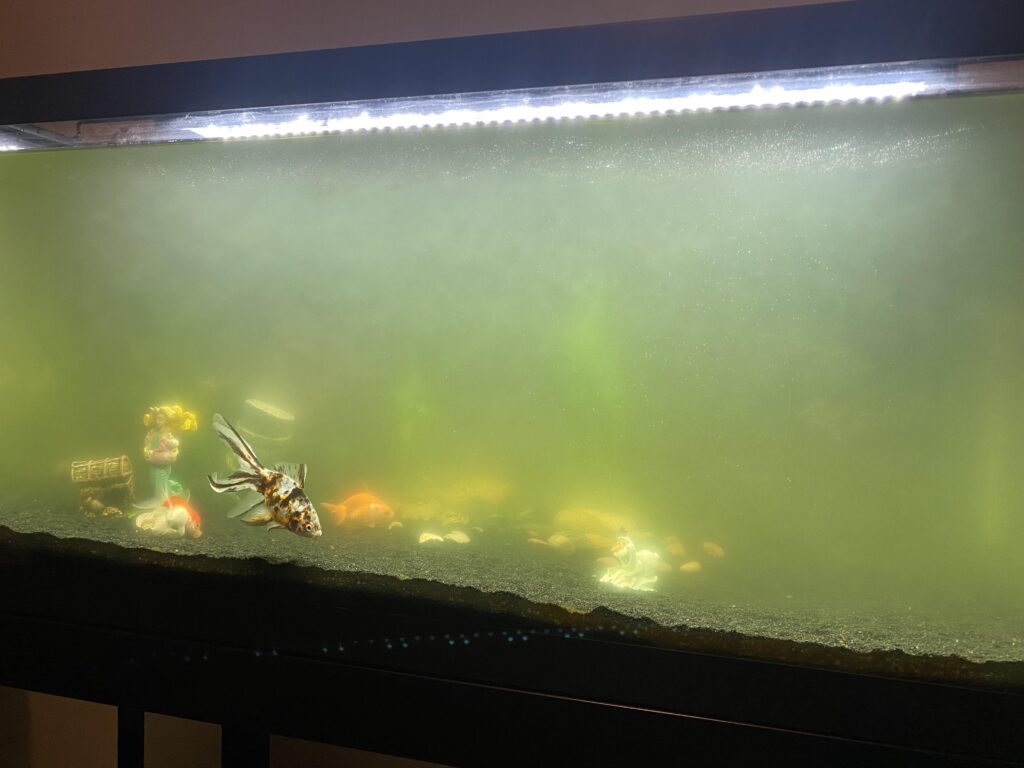
Before seeing green and running for the hills or the nearest fish store, let’s take a moment to understand what we’re up against. Yes, my fish-loving pals, we’re talking about algae bloom.
What is Algae Bloom?
An algae bloom, simply put, is a rapid increase and accumulation of algae in an aquarium or body of water. It can make your goldfish tank look like a floating green salad. Believe me, you don’t want a salad in your tank unless it’s purposeful and fits into your goldfish diet plan.
Why does it occur in Goldfish Tanks?
So, why does this mean green invasion occurs in goldfish tanks? The real culprits are excessive nutrients, poor tank maintenance, and improper light conditions. Even forgetting to turn off the lamp at night can turn your goldfish paradise into a green nightmare. That’s right! Algae are mini plant-like creatures thriving on light and resources meant for your goldfish.
Effects on Goldfish
While our shiny goldfish can certainly live amidst the greenery, algae bloom does affect their wellbeing. An excessive algae bloom not only competes for resources but also affects water quality and oxygen levels. Think of a rowdy roommate hogging the food and TV remote – not a serene living, right?
Don’t worry, though. Now that we understand what algae bloom is, why it occurs, and its effects on our beloved goldfish, let’s mosey on to the next part. Let’s fight the green plague in style and keep our goldfish happy and healthy! Onwards to understanding prevention measures.
Preventing Algae Bloom in Goldfish Tanks
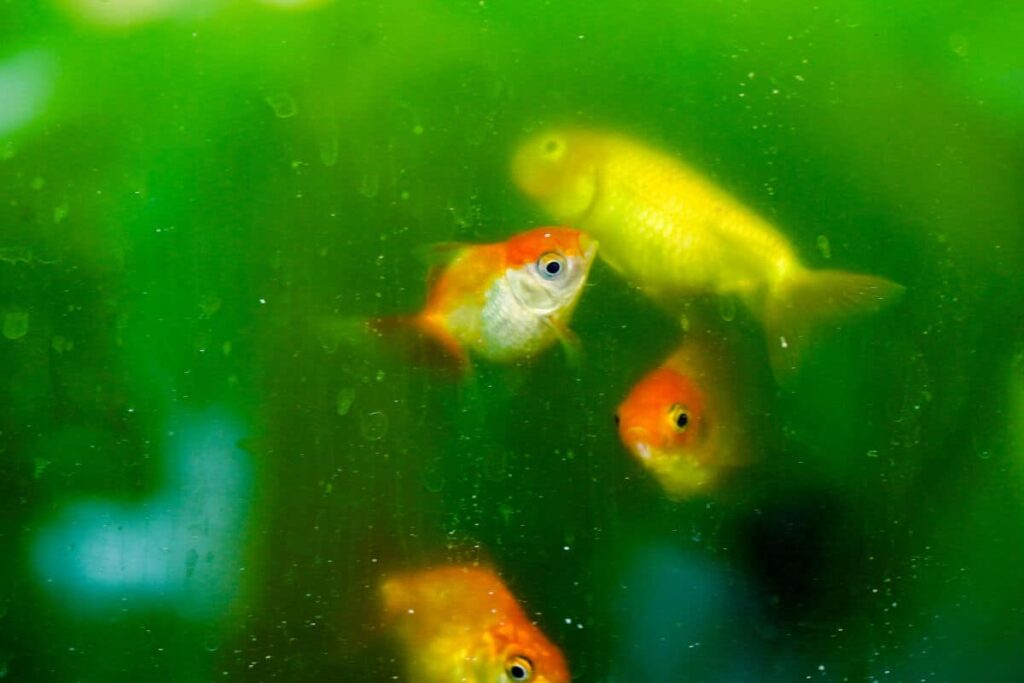
Oh yes, dear reader, hope does bloom! Now that we’re knowledgeable about the mean, green, marine monster – algae bloom, let’s dive straight into what we all love – solutions!
Proper Feeding Techniques
Your goldfish is a hungry, hungry beastie, but overfeeding spells trouble (and not just for your fish’s figure). Leftovers in the tank make the perfect buffet for algae. Feed your gluttonous goldfish small amounts twice a day, ensuring it’s all gobbled up before adding more.
Troublesome algae avoided, and goldfish swim-bladder disease steered clear – hurray! But like all great battles against evil, we’re just warming up, folks…
Maintaining Tank Cleanliness
Like your abode, your goldfish’s home needs a bit of regular sparkle and shine. Exchanging around 10-20% of water each week keeps your fishy happy and algae at bay. Use a siphon for fecal matter and uneaten food – a cleaning method that’s more vacuum, less janitorial.
Let’s pause from our cleaning spree and wander over to the mysterious land of lighting, shall we?
The Role of Lighting
Goldilocks had it right – not too much, not too little, just right. Think of algae as unwanted houseguests who enjoy long, unsolicited tans. Restricting natural or artificial light to around 8-10 hours a day should keep your tank from turning into an algae-infested green-o-sphere.
Now, dear aquarists, let’s dive deeper and explore the art of choosing the perfect tank.
Choosing the Right Tank
Size does matter in the case of goldfish tanks. Too small a space and these orange sweeties get grumpy (well not literally), producing lots of waste, thereby inviting – our nemesis – the algae. A larger tank, 20 gallons or more, buffers against drastic water changes, indirect invitation to algae.
Speaking of natural balances, sometimes you’ve got to fight nature with, well, nature.
Natural Algae Controllers
Algae’s kryptonite comes in the form of aquatic plants and certain critters. Fast-growing plants compete with algae for vital resources – resources limited, algae defeated. Hornwort or anubias can be your goldfish’s algae combating sidekicks.
With this battle plan firmly in hand, prepare to wage war against the green tide! Next up – how to identify this slippery foe, because knowing your enemy is half the battle, right?
Identifying Algae Bloom

Everyone likes a good mystery, but not when it involves the health of your goldfish! Picture this, you wake up one morning and your goldfish tank water looks… a bit off, now what? Well, you might just be dealing with an algae bloom. But fear not, dear goldfish owner, let’s dive into this ocean of information together.
Symptoms of Algae Bloom in Goldfish Tanks
When algae throw a party in your goldfish tank, it leaves a rather distinctive calling card. It starts with the water turning a greenish tint. Then, it becomes denser, turning into more of a pea soup—and not the tasty kind. Your visibility decreases and suddenly, finding your goldfish feels like a game of “Where’s Wally?”. But don’t fret, recognising these signs, while disturbing, is the first step to restoring balance in your fishy kingdom.
Types of Algae Commonly Found in Goldfish Tanks
Besides the party-loving green algae, our goldfish tanks can also host other uninvited algae. Like a zoo full of unwanted guests, you may encounter brown algae, blue-green algae, or even the hair-like string algae. Each of these has its unique traits, playing out like characters in a weird, underwater sitcom. Brown algae is typically the ‘new kid on the block’, popping up in new tanks. Blue-green algae, which is actually a bacteria (plot twist!), can turn your tank water into a thick, smelly mess. And then there’s string algae, letting its hair down in long, greenish strands. Fun, right?
Just as we’re getting to know these algae, let’s get armed with the knowledge to defeat them. It’s time to roll up our sleeves and dive into the solutions section next. We’ll discuss treatments for algae bloom that can clear up your tank, and also bring a sigh of relief to you and your goldfish.
Treating Algae Bloom in Goldfish Tanks
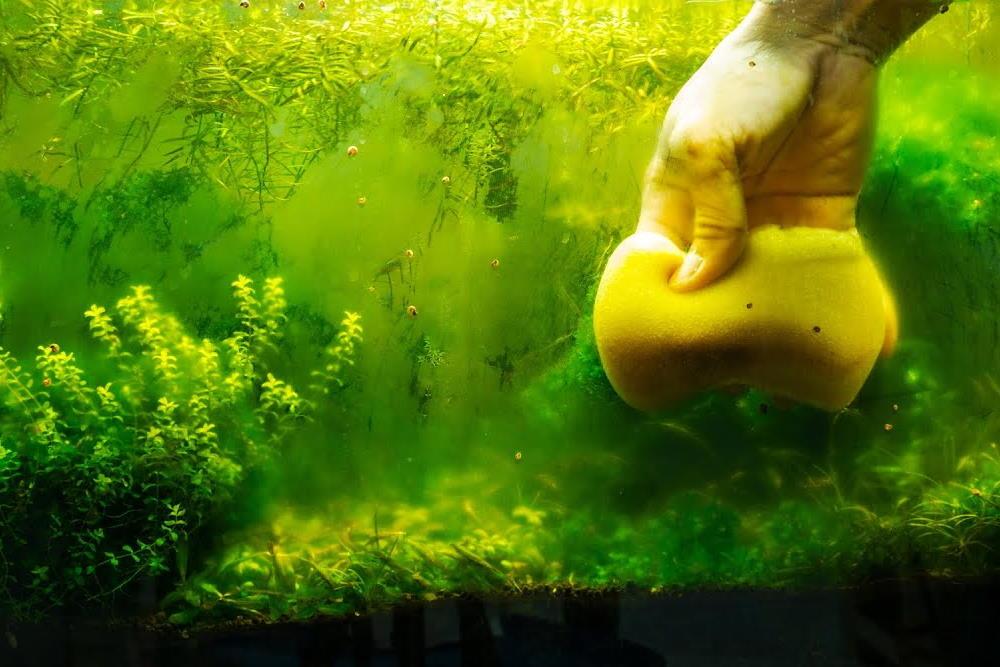
Welcome to the moment you’ve been waiting for. We’ve gathered intel, we’ve studied the enemy, and now, we’re ready for battle. Here, we’ll conquer the notorious algae bloom once and for all!
Algae Removers and Its Safe Use
Algae removers are like the tanks in this battlefield against algae. Sure, they pack a punch! But you need to use them safely. Never use more than recommended, or you’ll end up doing more harm than good. Like alcohol, a little can be useful; too much can ruin your weekend.
Maintaining Water Quality
Quality of water in your fish tank is the secret agent that keeps your goldfish happy and healthy. Keep an eye on nitrate and phosphate levels. High levels in your tank? Algae bloom party! Regular water changes and using an aquarium water conditioner can help you win this secret war.
Using Algae Eater Fish
Introducing algae eaters – the biologic hitmen who take out algae for a living. Named for obvious reasons, these friendly fellas love to eat algae! Be careful though, not all are fans of cold water. Vet your algae eaters well to avoid inviting a fish unfriendly to your goldfish.
Investing in UV Sterilizers
Want to play the long game? Invest in a UV sterilizer. It’s like the sunbathing session for your water that algae absolutely hate. UV sterilizers work by literally altering algae’s DNA making it impossible for them to reproduce. Sounds gruesome, but it’s effective!
Your fight against algae bloom can be overwhelming. But fret not, for armed with the right information and approach, victory will be yours. It’s time, brave aquarist, to move into long-term management phase.
Next, we will discuss how to manage algae bloom in the long run – the ultimate ‘keep-them-away-forever’ strategy!
Long-Term Management of Algae Bloom
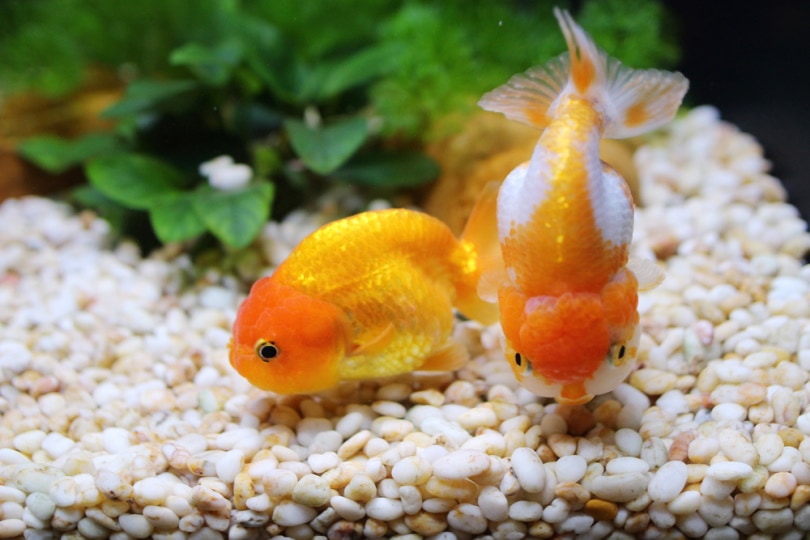
Beating an algae bloom is a huge relief, I know! But, it’s just a part of the story. We need to master long-term solutions to avoid this green beast from revisiting your goldfish tank. If you think your powers as an aquarist end after an algae bloom, naah, mate! It’s just the beginning.
Regular Tank Maintenance
Does “cleanliness is next to godliness” ring a bell? Well, let that help you remember to scrub-a-dub-dub your goldfish tank regularly. Cleaning the tank, filters, and changing water are key ways to maintain a bloom-free tank. Keep this routine, and you’ll make your goldfish strut their stuff without those pesky algae lurking around.
Monitoring Water Condition
Now, don’t consider your goldfish tank a swimming pool, alright? Keep an eye on water conditions by testing it regularly for pH, ammonia, nitrites, and phosphates. Trust me, goldfish don’t like nasty water. Isn’t it lovely to see them swim in pristine waters as you sip your morning brew?
Balancing the Ecosystem
This might sound like high school science class but, bear with me. Your goldfish tank is a tiny ecosystem needing balance. Introducing live plants or algae eaters can help control algae levels. Remember, every living thing in your tank plays a part. Go on, be the Jane Goodall of the goldfish world.
That’s it! You now have a fishload of knowledge to keep your tank algae bloom-free. Farewell, green beast! Hello, happy flippin’ goldfish! The journey doesn’t end here, though. As a proud goldfish parent, you’ll learn and grow. Just like your goldfish. But in knowledge, of course. You’re not actually going to grow fins and scales, are you?
To Sum Up
Understanding what algae bloom is, why it occurs in goldfish tanks, and its effects on your pet, is just the first step. Combating, preventing, and maintaining a healthy tank are crucially intertwined steps.
Proper feeding techniques, cleanliness, proper lighting, choosing the right tank, and employing natural algae controllers helps. Recognizing symptoms, knowing different algae types and using safe algae removers effectively aid the process. Long-term management involves regular tank maintenance, constant water condition checks, and ensuring a balanced ecosystem.
Frequently Asked Questions (FAQ)
Question: What exactly is an Algae Bloom?
Answer: Algae bloom is a rapid increase or accumulation of algae in an aquatic system, in this case, a goldfish tank. It can change the color of the water and create a ‘film’ on the surfaces of the tank.
Question: Why do Goldfish Tanks experience Algae Bloom?
Answer: Algae thrive on certain conditions: light, nutrients, and poor water quality. Overfeeding your fish can lead to excessive nutrients and poor water quality, creating an ideal scenario for algae bloom.
Question: How does Algae Bloom affect my Goldfish?
Answer: Algae bloom might deplete the oxygen levels in the tank, potentially leading to health issues for your goldfish. It can also obscure your view of the fish and make the tank appear unclean.
Question: How can I prevent Algae Bloom?
Answer: You can prevent Algae Bloom by keeping the tank clean, feeding your fish properly, controlling the light exposure, choosing the right tank size, and introducing natural algae controllers like live plants.
Question: How to identify if my Goldfish Tank has Algae Bloom?
Answer: Look out for changes in the water color, a possible ‘film’ on the tank surface, and observe the health and behavior of your goldfish for any unusual signs.
Question: Are there specific types of fish that eat Algae?
Answer: Yes, some fish species, known as Algae Eaters like the Bristlenose Pleco, Siamese Algae Eater, and Otocinclus Catfish, can help control algae growth in your tank.
Question: Can an UV Sterilizer be useful in treating Algae Bloom?
Answer: Yes, UV Sterilizers can be very effective in combating algae bloom. They use ultraviolet light to kill or inactivate microorganisms, including algae.

